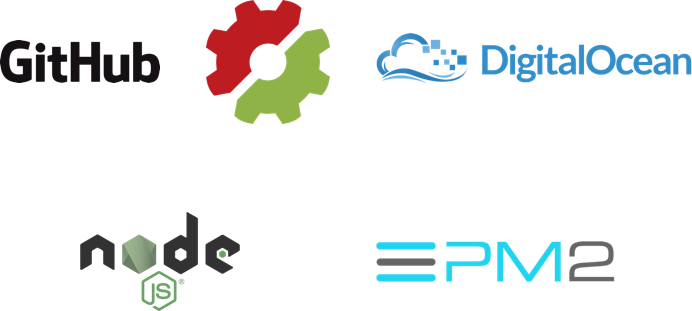How I debug Node.js · Steel Brain http://steelbrain.me/2016/04/15/how-i-debug-node-js.html
@niftylettuce – Automated Continuous Integration Setup for Graceful and Zero-Downtime Node App Deployment using GitHub, PM2, Digital Ocean, and SemaphoreCI
The Way of the Gopher: Making the Switch From Node.js to Golang — Medium
The Way of the Gopher: Making the Switch From Node.js to Golang — Medium https://medium.com/@theflapjack103/the-way-of-the-gopher-6693db15ae1f#.p5o4d94i9
Cash promises money shell commands in Windows
Cash is a cross-platform implementation of Unix shell commands written in pure ES6.
— dthree/cash: Cross-platform Linux without the suck https://github.com/dthree/cash
I do hope this doesn’t suck. The promise of to bring my fab shell commands to Windows with a simple npm launch. We’ll see.
RSS Puppy: a lightweight, open source RSS reader | Opensource.com
Learn more about RSS Puppy, a new RSS reader created by BuzzFeed’s Open Lab.
Source: RSS Puppy: a lightweight, open source RSS reader | Opensource.com
jiahaog/nativefier: Wrap any web page natively without even thinking, across Windows, OSX and Linux
jiahaog/nativefier: Wrap any web page natively without even thinking, across Windows, OSX and Linux https://github.com/jiahaog/nativefier
Setting up a Node.js Application for Production on Ubuntu 14.04
Node.js is an open source Javascript runtime environment for easily building server-side and networking applications. The platform runs on Linux, OS X, FreeBSD, and Windows, and its applications are written in JavaScript. Node.js applications can be run at the command line but we will teach you how to run them as a service, so they will automatically restart on reboot or failure, so you can use them in a production environment.
In this tutorial, we will cover setting up a production-ready Node.js environment that is composed of two Ubuntu 14.04 servers; one server will run Node.js applications managed by PM2, while the other will provide users with access to the application through an Nginx reverse proxy to the application server.
Source: How To Set Up a Node.js Application for Production on Ubuntu 14.04 | DigitalOcean
Good tutorial. You can also do the reverse proxy with Apache.
Use Intro.js to add tours and interactive docs to JS apps
Add easy-to-absorb, interactive user documentation to your JavaScript apps with Intro.js. Learn from a sample tour implementation how to demonstrate your application’s features the modern way from within the app’s UI.
Source: Add interactive documentation to your JavaScript apps with Intro.js :: IBM developerWorks
For complex interactive apps and sites showing visitors how to use the site is always tricky. Intro.js can help by allowing you to create interactive tours that demonstrate how the app works. The tours are always available through an icon in the navigation.
Embed Node.js on any website
Embed Node.js on any website http://blog.tonicdev.com/2015/09/30/embedded-tonic.html
Use Socket.IO P2P to connect peers for chat and more via WebRTC
Socket.IO P2P provides an easy and reliable way to setup a WebRTC connection between peers and communicate using the socket.io-protocol.
Socket.IO is used to transport signaling data and as a fallback for clients where the WebRTC
PeerConnectionis not supported. Adding a simple piece of middleware to your socket.io setup enables this – no need to hand roll your own signaling exchange or set up, deploy and scale new servers.
Source: Socket.IO — Socket.IO P2P
There is potential here to create a secure, non-archived chat system that would be useful for education. Add chat to a CALI eLangdell Lawbook for example, or enable law student study groups.

